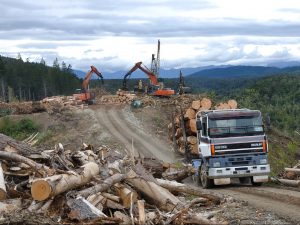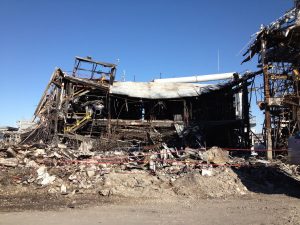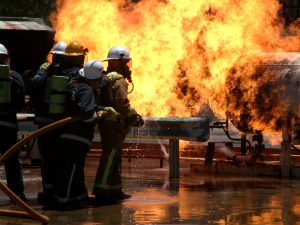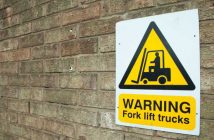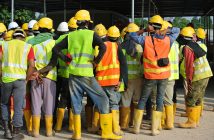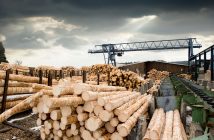Last year – 2017 – was a huge year for WorkSafe and for me personally in my first year as chief executive, Nicole Rosie reveals
This job is an opportunity to make a difference, leading an organisation that is working to get New Zealanders home healthy and safe at the end of each working day.
This passion for making a difference to health and safety is shared by the people who work for WorkSafe across the country.
WorkSafe has continued to concentrate its effects on the four sectors where we can make the biggest difference to their unacceptably high fatality and serious injury rates – agriculture, construction, forestry and manufacturing.
Risk management
During the course of the past year or so, we have started talking more about risk management.
This is fundamental to improving health and safe outcomes and necessary, as the Health and Safety at Work Act 2015 (HSWA) requires business to ensure health and safety of workers and others exposed to work activity risks.
We have realised that the traditional approach to health and safety – the focus on training, operational procedures and PPE – do not work because they largely rely on people not making mistakes as they go about their work.
To be effective, we need to be looking at higher-end controls such as elimination, substitution and engineering to manage risks.
While all risks need to be managed, we encourage businesses to pay particular attention to the critical ones; the things that could result in death, a life shortening illness or severe permanent disability.
Focussing only on the causes of high-frequency and low consequence incidents will not prevent the less frequent but more severe harm from occurring.
In fact, only about 15 – 25% of critical risks share underlying causes with typical lost time injury events.
Broadly speaking, critical risks are:
- Acute eg. tree felling, forklifts, quad bikes, tractors, falls
- Work-related health eg. asbestos, silica, dust, chemical exposures
- Catastrophic eg. explosions, fires, chemical interactions, ammonia.
- Acute — examples are tree felling, forklifts, quad bikes, tractors, falls
- Work-related health — examples are asbestos, silica, dust, chemical exposures
- Catastrophic — examples are explosions, fires, chemical interactions, ammonia
Critical risk isn’t actually defined in our legislation; however, it is a pragmatic and effective approach for businesses to check all risks are identified and sufficient effort and focus goes on the more serious risks.
Risks identified as critical require a more emphasis to implement elimination, substitution or engineering controls.
Late last year, we were able to announce that the government’s interim target of reducing work-related fatalities and serious injuries by 10% was met at the end of 2016.
The focus is now on ensuring we can achieve the overall 25% reduction by 2020.
Momentum continues to build to a point where I believe we are now on the cusp of seeing the benefit on the factory/farm/office or shop floor of significant culture change in how businesses approach health and safety.
There are a couple of key interconnected pillars to this culture change.
Leadership
As the regulator, WorkSafe’s role is to lead, influence and leverage the health and safety system to improve workplace health and safety outcomes.
What we have been seeing recently is that more business leaders are stepping forward because they can see the most effective way to bring about positive change in health and safety is to lead on it in their respective industries.
Industry groups such as the Business Leaders’ Health and Safety Forum has continued to have an increasing influential presence in the business community.
In fact, the forum has just signed up more than 30 core government agencies to join its membership.
This cross-fertilisation of public and private leadership in health and safety adds real clout to bring about change.
The Forestry Industry Safety Council also continues to work at improving forestry safety outcomes and the Agricultural Leaders Health and Safety Action Group, established at the end of 2016, is also making inroads in rural industries when its sector leaders realised they could achieve more results by working together.
And in construction, sector leaders are now also working towards setting up a group unified by a common desire to bring about real change in health and safety on building sites.
WorkSafe is closely involved with these all these organisations – as well as industry bodies and unions – further strengthening ties between industry and the regulator.
What we are all doing is integrating health and safety into the normal way of doing things whether it be legislation, regulations, business models or charters.
In other words, there is recognition that we are all on the same team in terms of wanting health and safety to improve.
Engaging and communicating
HSWA puts the expectation on businesses to engage meaningfully with their staff on health and safety matters and to ensure their staff feel able to speak up about concerns they may have.
Businesses and leaders who genuinely engage with their staff in health and safety decision-making will tell you that both business and health and safety performance improve.
It makes sense that the two would be intrinsically linked.
As an example, we’ve heard from several industry membership organisations, that businesses which have embraced this inclusiveness have found productivity has increased.
Again, it makes sense that workers have invaluable knowledge at ground level which can make a big difference to profit margins in business tap into that resource.
An additional benefit is that a worker who feels they have made a positive contribution go home happy, healthy and safe.
Healthy work
As we know, as both health and safety practitioners and news consumers, it’s the deaths and serious injuries at work often attract media and public interest.
That’s understandable given the ripple effects these tragedies have on our communities and business.
The “health” in health and safety has a much broader effect on our workforce.
A typical worker is 15 times more likely to die from work-related ill-health than a work-related safety incident.
As many as 30,000 cases of serious ill health each year and an estimated 600-900 people die each year from work-related ill health.
These are sobering statistics that I think about often.
Over the past year, we have continued to work on work-related health initiatives in our 10-year health strategy.
Following on from work to raise awareness of health risks of working with dust, we are working to launch a suite of guidance on noise-induced hearing loss prevention.

Nicole Rosie is Chief Executive of WorkSafe New Zealand, the primary workplace health and safety regulator with over 550 staff based across New Zealand
We have several other health risk initiatives in the pipeline.
We’ve also ensured that work-related health issues form part of business risk management.
In 2018, we are continuing to focus on our priority sectors, leadership and engagement, and work-related health to ensure we have a sustained improvement in health and safety that builds on the positive momentum that we have been seeing.
It’s worth noting that indicative performance for 2017 suggests that is flattening.
This is the start of the journey not the end.


